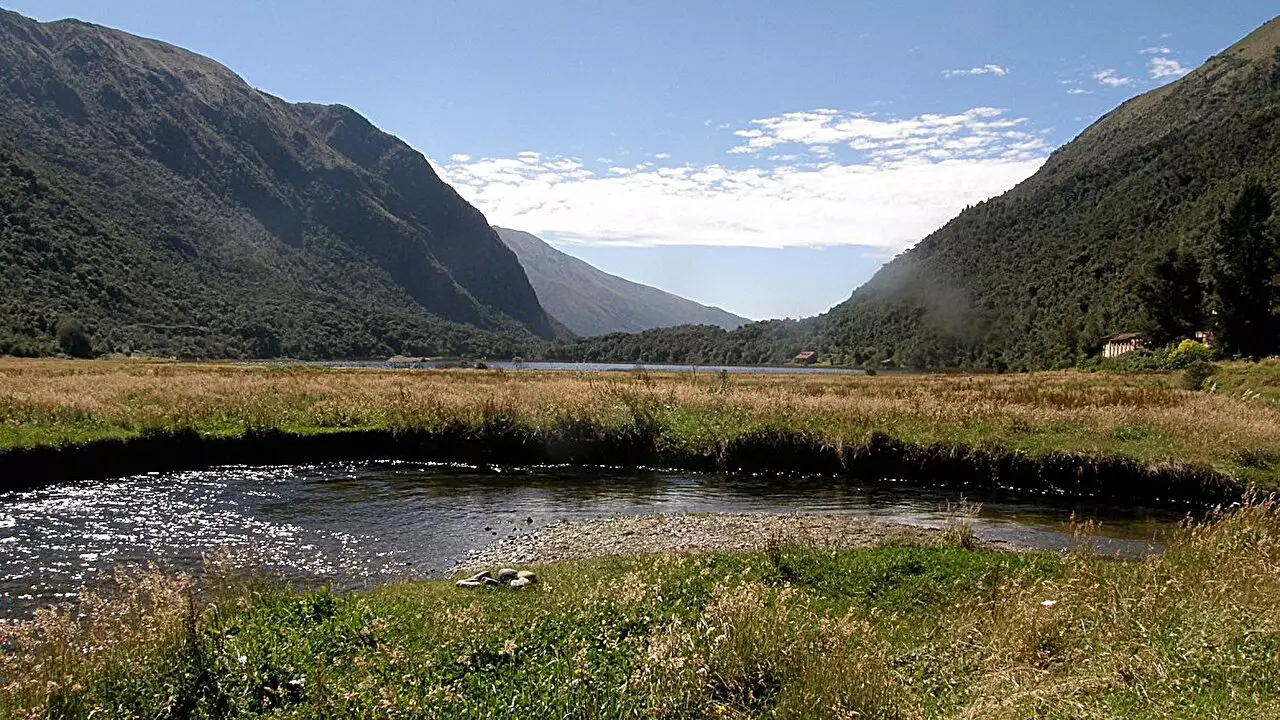A recent study conducted by researchers at Brown University has delved into ancient temperatures and rainfall patterns in the tropical Andes of South America. This study, which covers a span of 16,000 years, sheds light on how carbon dioxide levels and ocean currents have influenced the climate history of this region. Published in the Proceedings of the National Academy of Science, this groundbreaking research could potentially aid in predicting and mitigating future climate impacts in tropical regions worldwide.
The study, led by scientists at Brown University, provides a comprehensive temperature record spanning over the past 16,000 years in the tropical Andes. By analyzing sediment samples from Laguna Llaviucu in Ecuador, researchers were able to unveil a strong correlation between temperature changes in the tropical Andes and global climate events. The main driving factor behind these temperature fluctuations was found to be carbon dioxide concentrations, with a significant impact from ocean currents as well.
Unlike many climate studies that focus on the Northern or Southern Hemisphere, this research emphasizes the importance of understanding how distinct regions, such as Antarctica, influence temperatures in the tropical Andes. The close connection between temperatures in the tropical Andes and Antarctic temperatures, largely controlled by carbon dioxide concentrations, highlights the complex interplay of factors shaping regional climates on a global scale.
To reconstruct past climate conditions, researchers analyzed lipid biomarkers and hydrogen isotopes from sediment samples collected at Laguna Llaviucu. These chemical compounds provide valuable insights into past temperatures and rainfall patterns, enabling the team to create a detailed timeline of climate changes over 16,000 years. This high-resolution data, combined with precise dating techniques, offers a unique perspective on the climate history of tropical South America.
The findings of this study not only contribute to our understanding of ancient climate patterns but also raise important questions about future climate trends. By identifying key drivers of temperature fluctuations in the tropical Andes, researchers hope to apply this knowledge to other tropical regions facing similar challenges. The emphasis on local factors and their role in counteracting rising CO2 levels underscores the need for continued research in sensitive mountain environments like the Andes.
Moving forward, the team from Brown University plans to further investigate past temperature patterns in regions lacking comprehensive climate records. As high tropical mountains, such as the Andes, face rapid rates of warming comparable to the Arctic, there is an urgent need to monitor and understand the impacts of climate change on these sensitive ecosystems. By studying past climate variations, researchers aim to gain valuable insights that can inform strategies for climate resilience and adaptation in tropical regions worldwide.


Leave a Reply